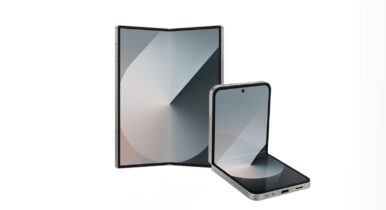Expandable memory capacity has become an important concern for many IT teams when evaluating mobile devices to deploy to employees. Personal and enterprise applications, as well as high-resolution photos and videos, can quickly fill up internal memory, inconveniencing users or forcing them to make tough decisions on what data to delete.
As smartphones increasingly replace both desktop and laptop computers for users who travel or work in the field, all the data that used to reside on those systems must find a new home on users’ mobile devices or in the cloud. However, virtual storage can pose security concerns or lead to large data charges if files continually need to be accessed and returned to the cloud.
Internal storage capacity has continued to increase over the past several generations of smartphones, with 64GB or 128GB becoming the new standard on the latest premium smartphones. However, phones supporting expandable memory through a microSD card offer several advantages:
Cost Effective: Purchasing SD cards is generally more cost-effective than selecting a phone model that features the equivalent boost in internal memory. High-quality, 256GB microSD cards are available for as little as $75, while a phone featuring 256GB of internal memory can cost up to $150 more than the standard 64GB model.
Removable and Sharable: When dealing with very large files or data sets, it’s often easier to share a memory card than to transfer files to devices over Wi-Fi or cellular networks. For example, for an organization that wants to provide its sales team with a catalog of training videos to access on their mobile phones, it’s much easier to hand out SD cards at the sales meeting than require each team member to download all that data.
Greater Capacity: For enterprises that have really big mobile data needs, expandable memory offers the highest capacity options. That said, it’s important to note that there are limits to the size of SD card supported on any given mobile device. Samsung’s new Galaxy Note9 supports expansion up to 2TB, for example, while the Galaxy S9 and S9+ support up to 400GB.
Still, Isn’t 128 GB Enough?
For many business users, 128GB is enough memory. However, when evaluating your enterprise’s mobile device storage needs, it’s important to consider the following:
Apps: While many businesses institute limited personal use policies for corporate-issued mobile devices, the reality is employees will use their company smartphone for both work and personal tasks. According to a recent report from App Annie, smartphone users access just over 40 apps per month, but have more than 80 installed on their phone. Still, even at a generous average size of 100MB per app, that accounts for just 9GB of storage space and is unlikely to push your users over the edge on its own.
Close the Workforce Tech Gap
Learn how to address the growing tech gap between C-suite and the new generation of digital natives. Download Now
Videos and Photos: The average file sizes for both photos and videos have quadrupled as resolutions have doubled from 2K to 4K, and 8 to 16 megapixels. This can really put a heavy strain on internal memory, when you consider that the average user has 630 photos and 24 videos on their phone. Video is the biggest memory hog of all, with one minute of 4K video at 30 frames per second taking up about 375MB of storage. If users are expected to store several hours of high-quality video on their mobile device, then expandable memory is sure to come into play.
Virtual Reality: Many organizations are exploring virtual reality (VR) for training or customer engagement, and this new medium can put significant pressure on mobile storage capacity. VR apps featuring high-resolution, 360-degree video can quickly top 1GB in size, with some much larger still.
Future-Proofing
The mobile storage needs of the enterprise will continue to grow as smartphones increasingly become the primary computing device.
Mobile storage needs are on the rise. As well as considering mobile phones with a larger internal storage capacity, choosing a device with a microSD slot gives you added flexibility. When selecting smartphones for staff, IT decision makers should check what size of SD card is supported, so they can be sure that users are future-proofed against growing storage needs.
Learn more about the Samsung Galaxy Note9, with a choice of 128GB or 512GB of onboard storage, and a microSD card slot to expand up to 2TB.








